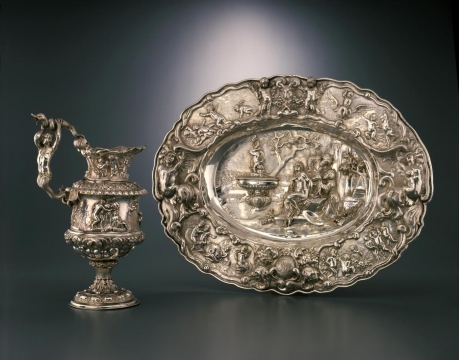Type:
Ewer and basin
Material / technique:
Silver
Dimensions:
Basin: 60 x 45 cms; ewer: 37 x 15 cms
Type of acquisition:
Donated by Pierre and Colette Bauchau
Year of acquisition:
1999
Depository institution:
The Rubens House, Antwerp
